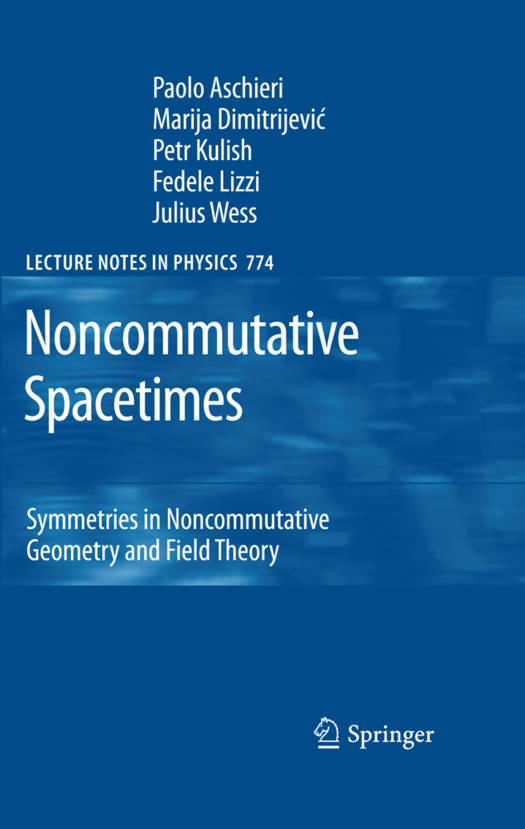
- Afhalen na 1 uur in een winkel met voorraad
- Gratis thuislevering in België vanaf € 30
- Ruim aanbod met 7 miljoen producten
- Afhalen na 1 uur in een winkel met voorraad
- Gratis thuislevering in België vanaf € 30
- Ruim aanbod met 7 miljoen producten
Zoeken
Noncommutative Spacetimes
Symmetries in Noncommutative Geometry and Field Theory
Paolo Aschieri, Marija Dimitrijevic, Petr Kulish, Fedele Lizzi, Julius Wess
€ 106,95
+ 213 punten
Uitvoering
Omschrijving
There are many approaches to noncommutative geometry and its use in physics, the ? operator algebra and C -algebra one, the deformation quantization one, the qu- tum group one, and the matrix algebra/fuzzy geometry one. This volume introduces and develops the subject by presenting in particular the ideas and methods recently pursued by Julius Wess and his group. These methods combine the deformation quantization approach based on the - tion of star product and the deformed (quantum) symmetries methods based on the theory of quantum groups. The merging of these two techniques has proven very fruitful in order to formulate ?eld theories on noncommutative spaces. The aim of the book is to give an introduction to these topics and to prepare the reader to enter the research ?eld himself/herself. This has developed from the constant interest of Prof. W. Beiglboeck, editor of LNP, in this project, and from the authors experience in conferences and schools on the subject, especially from their interaction with students and young researchers. In fact quite a few chapters in the book were written with a double purpose, on the one hand as contributions for school or conference proceedings and on the other handaschaptersforthepresentbook.Thesearenowharmonizedandcomplemented by a couple of contributions that have been written to provide a wider background, to widen the scope, and to underline the power of our methods.
Specificaties
Betrokkenen
- Auteur(s):
- Uitgeverij:
Inhoud
- Aantal bladzijden:
- 199
- Taal:
- Engels
- Reeks:
- Reeksnummer:
- nr. 774
Eigenschappen
- Productcode (EAN):
- 9783540897927
- Verschijningsdatum:
- 14/07/2009
- Uitvoering:
- Hardcover
- Formaat:
- Genaaid
- Afmetingen:
- 160 mm x 239 mm
- Gewicht:
- 498 g

Alleen bij Standaard Boekhandel
+ 213 punten op je klantenkaart van Standaard Boekhandel
Beoordelingen
We publiceren alleen reviews die voldoen aan de voorwaarden voor reviews. Bekijk onze voorwaarden voor reviews.








